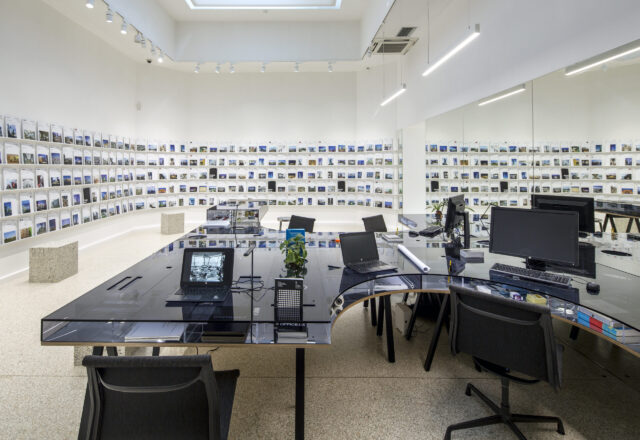On OfficeUS (from the Introduction to the OfficeUS Atlas, Lars Müller Publishers, 2015)
Occupying the US Pavilion at the 14th International Architecture Biennale in Venice from June 7 through November 23, 2014, OfficeUS presented a global history of the architectural office while mapping aspirations for its future. The exhibition contained an archive of nearly one thousand projects produced by US offices abroad between 1914 and 2014—the OfficeUS Repository—that located the intersection between the operations of US architecture firms and their international impact over the last century. An office of six partners worked within the Repository over the 25 weeks of the Biennale, in collaboration with global outpost offices and a series of visiting experts, with the mission to look backward and forward simultaneously, submitting historical material to contemporary critique while projecting alternative futures out of it. The chronologically organized project binders of the Repository were punctuated by a series of 25 OfficeUS Issues, outlining weekly investigations and debates based on pressing historical and contemporary questions. The project—both archive and office—served simultaneously as an archaeology of global architectural firms and a critical challenge to them.
The projects compiled and displayed in the OfficeUS Repository may have been regarded as singular interventions by their architects, clients, or inhabitants. More often than not, however, the activities of US architecture firms abroad have been analogous to the country’s fraught political and economic international involvements, historically in sync with more or less benign forms of imperialism. In order to produce a prehistory of the contemporary global office and influence its future course, OfficeUS provided a transversal cut through this body of work. Conceived as an operational, experiential, and historical mirror of past and contemporary concerns, the exhibition provided a platform for projection and critique and a challenge that demanded visitors’ sustained attention to the depth of work on display, assembled for the first time as a totality by OfficeUS. In order to disallow the simple consumption of prepackaged history often expected of such exhibitions, the organization of the Repository purposely denied any easy classification through political or social clichés, formal discourses, or facile oppositions between supposedly “critical” or “corporate” practices. Instead, it aimed to produce conversations about the ideological, ethical, and aesthetic dimensions of architectural production through new historical grounds and references.
While recasting a number of elements that have together constituted the architectural office—from the drafting desk to the meeting table, the organizational chart, and the materials and project library—OfficeUS also rewired relationships between partners, clients, consultants, and critics. The OfficeUS Repository, which served as the library for both visitors and the live office, was presented neither as a definitive body of research nor as the final word on this history. With ideas serving in place of clients, and all of their interlocutors acting as potential double agents, the OfficeUS Partners examined the contemporary implications of global work through the complex and problematic history presented in the archive.
– Eva Franch i Gilabert, Ana Miljački, Ashley Schafer
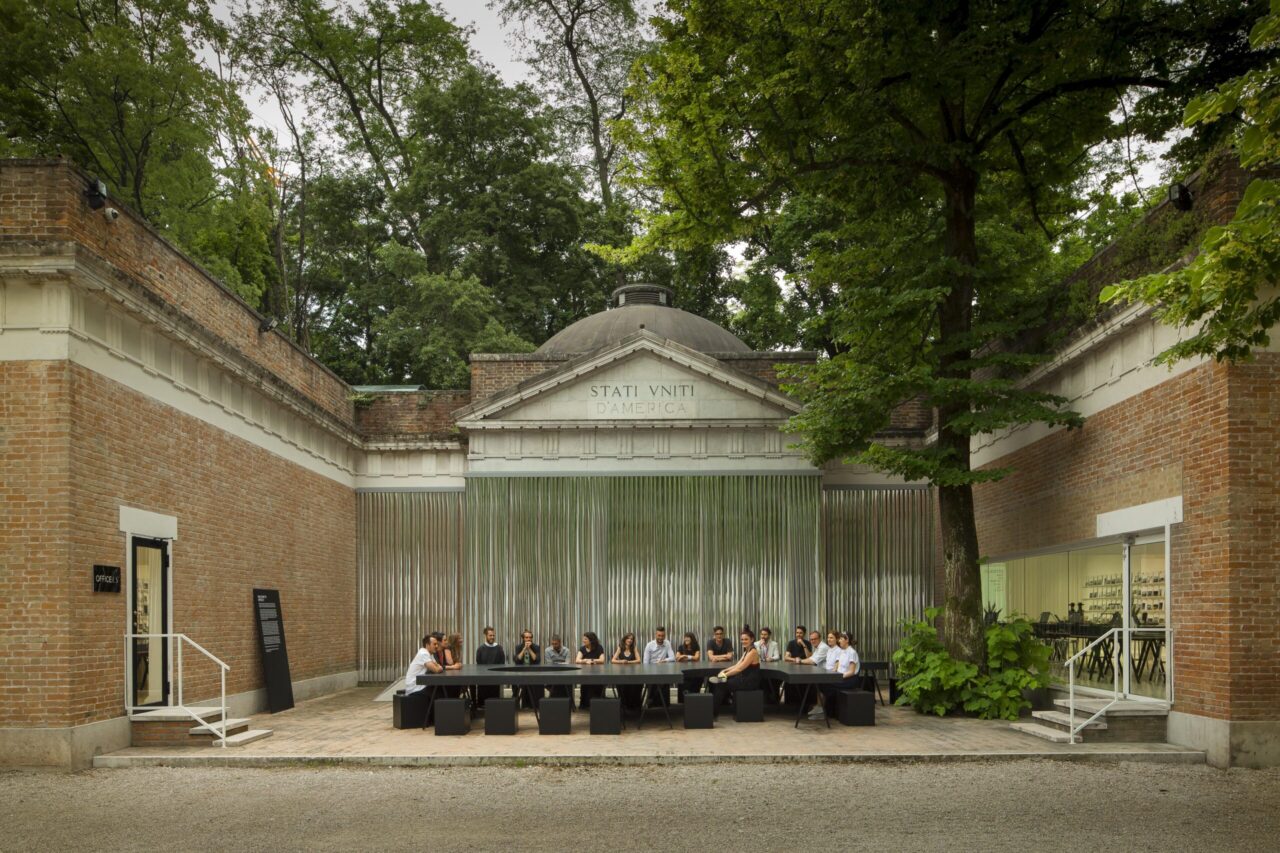

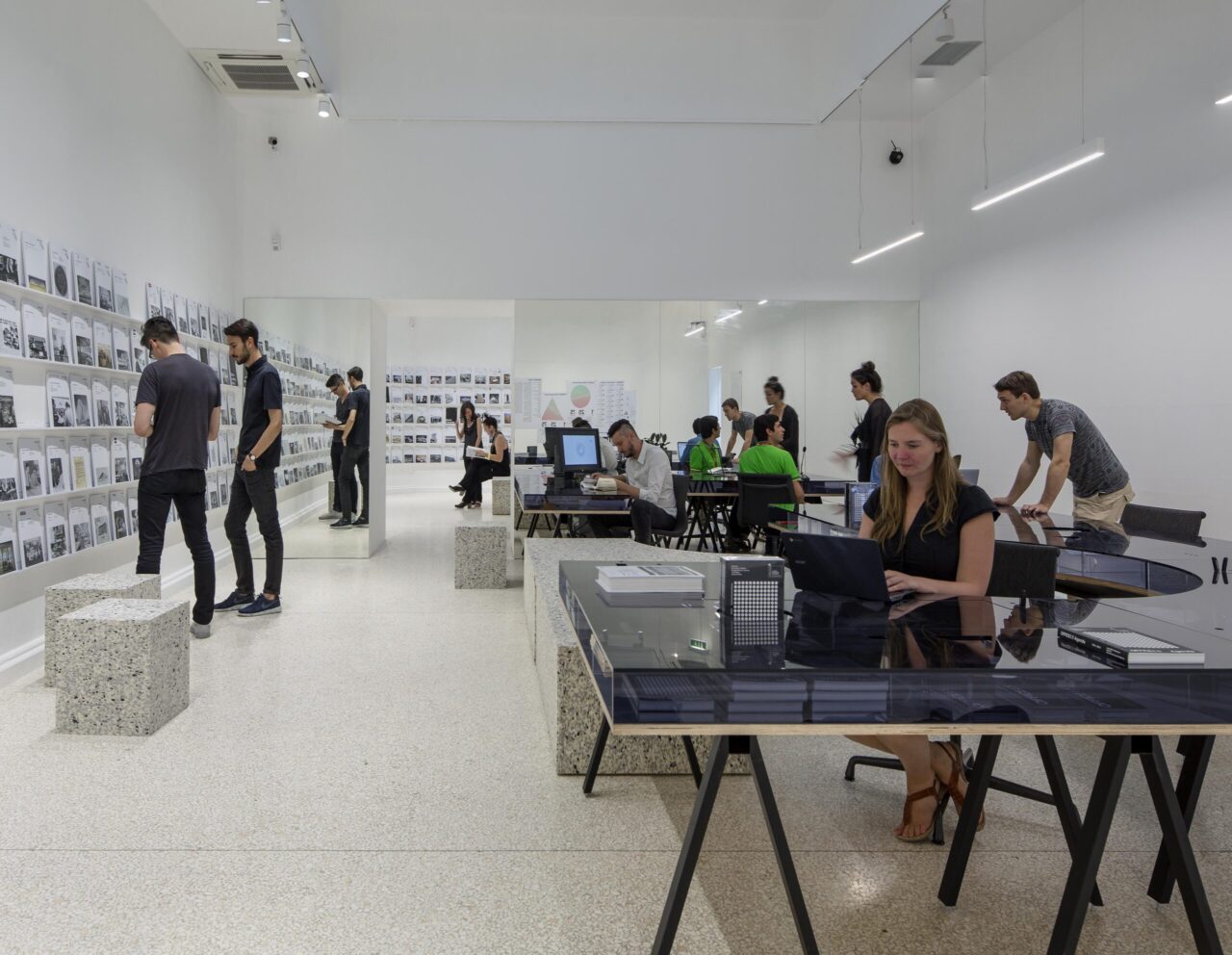
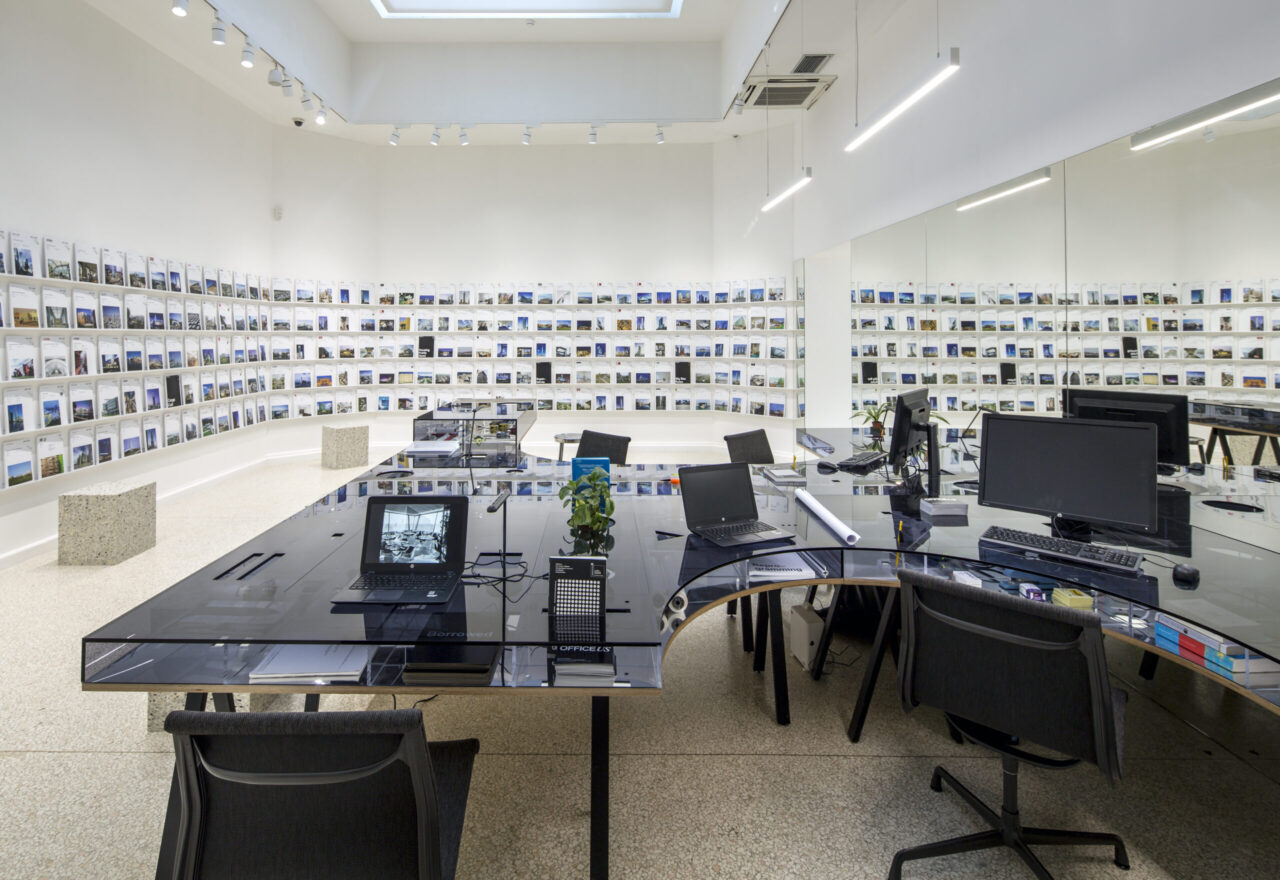
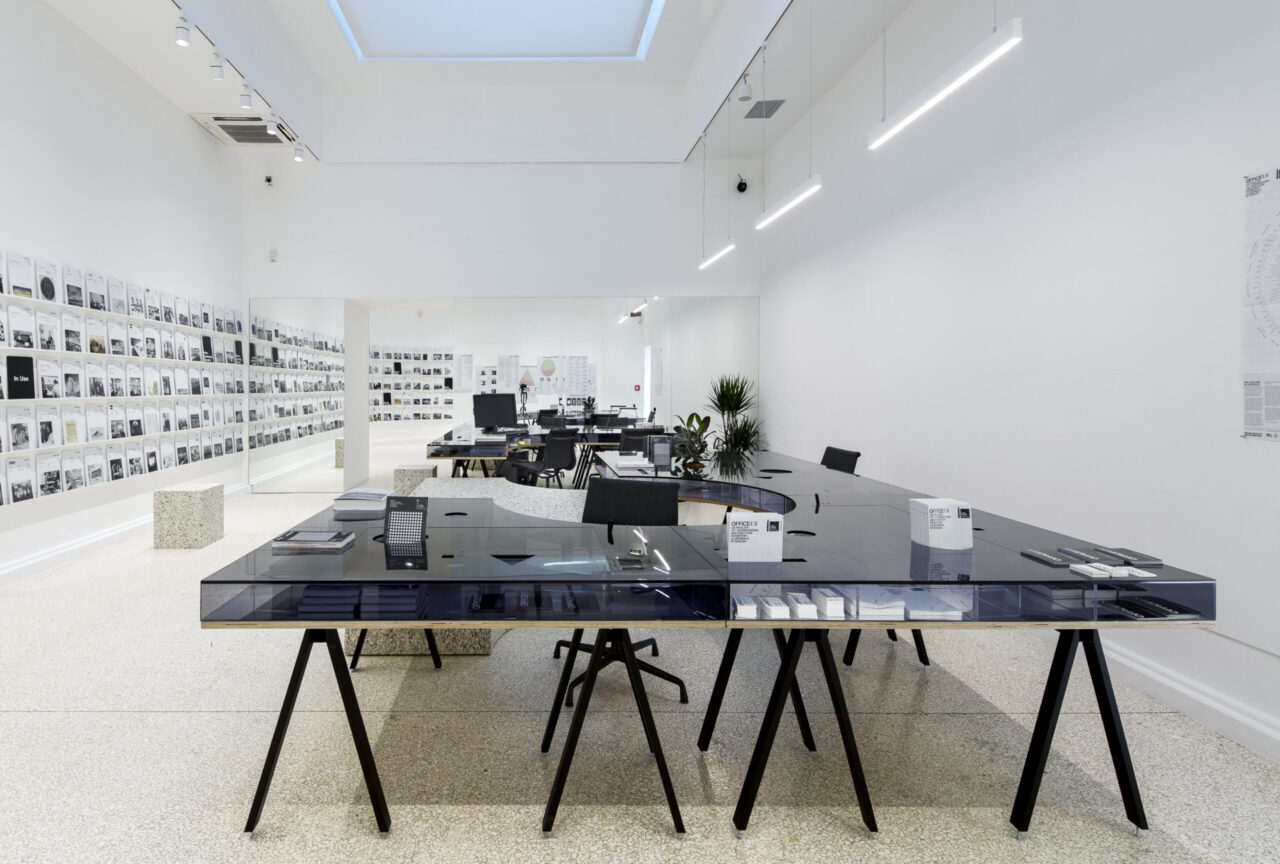
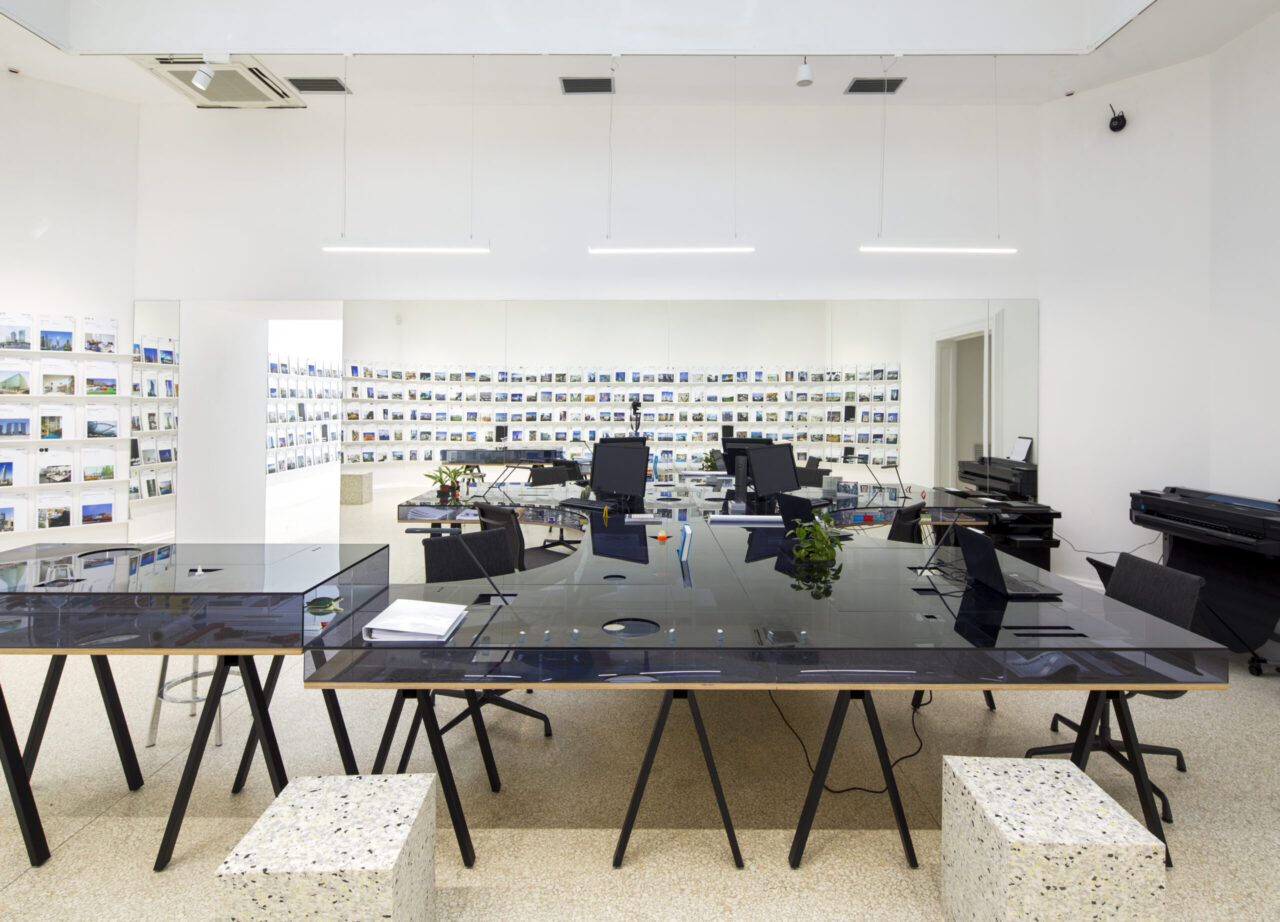
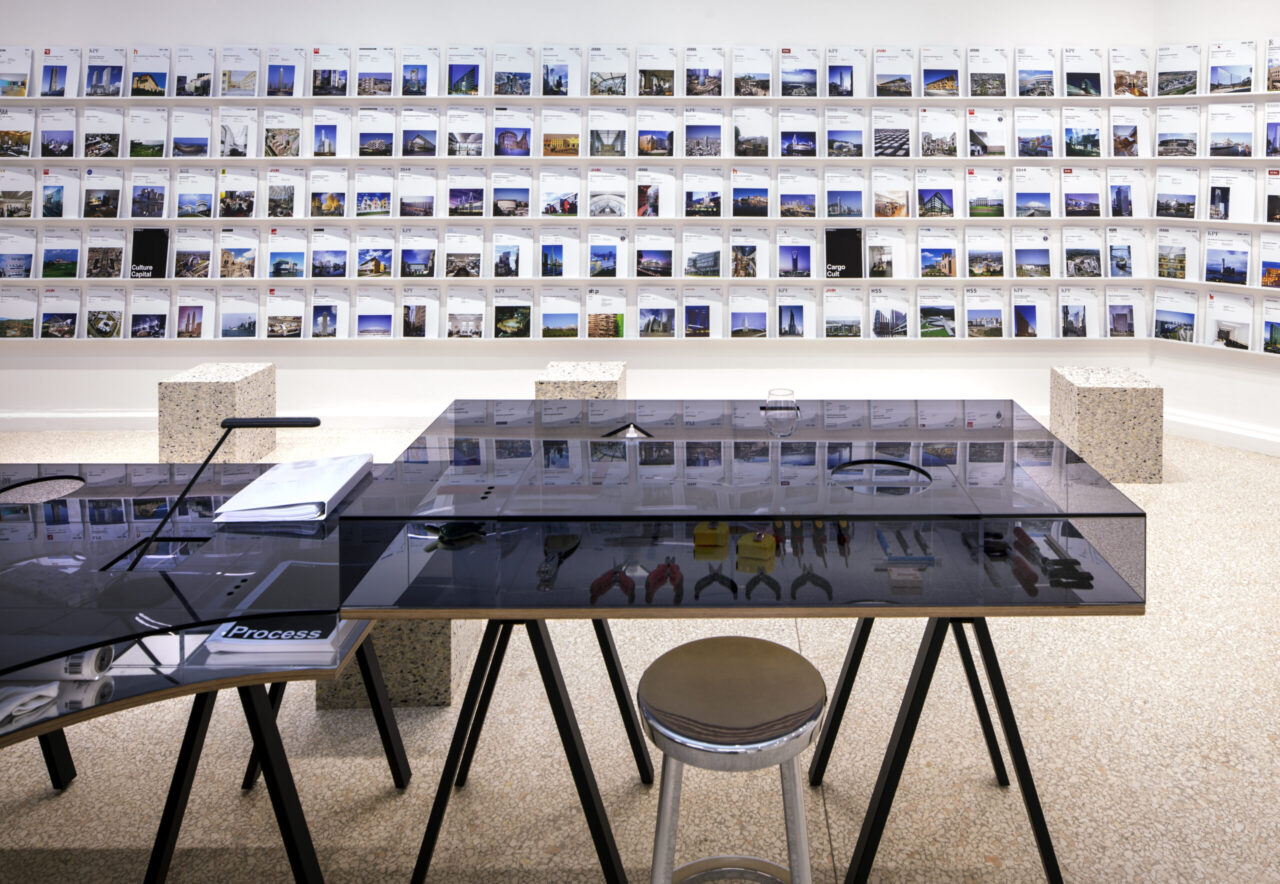
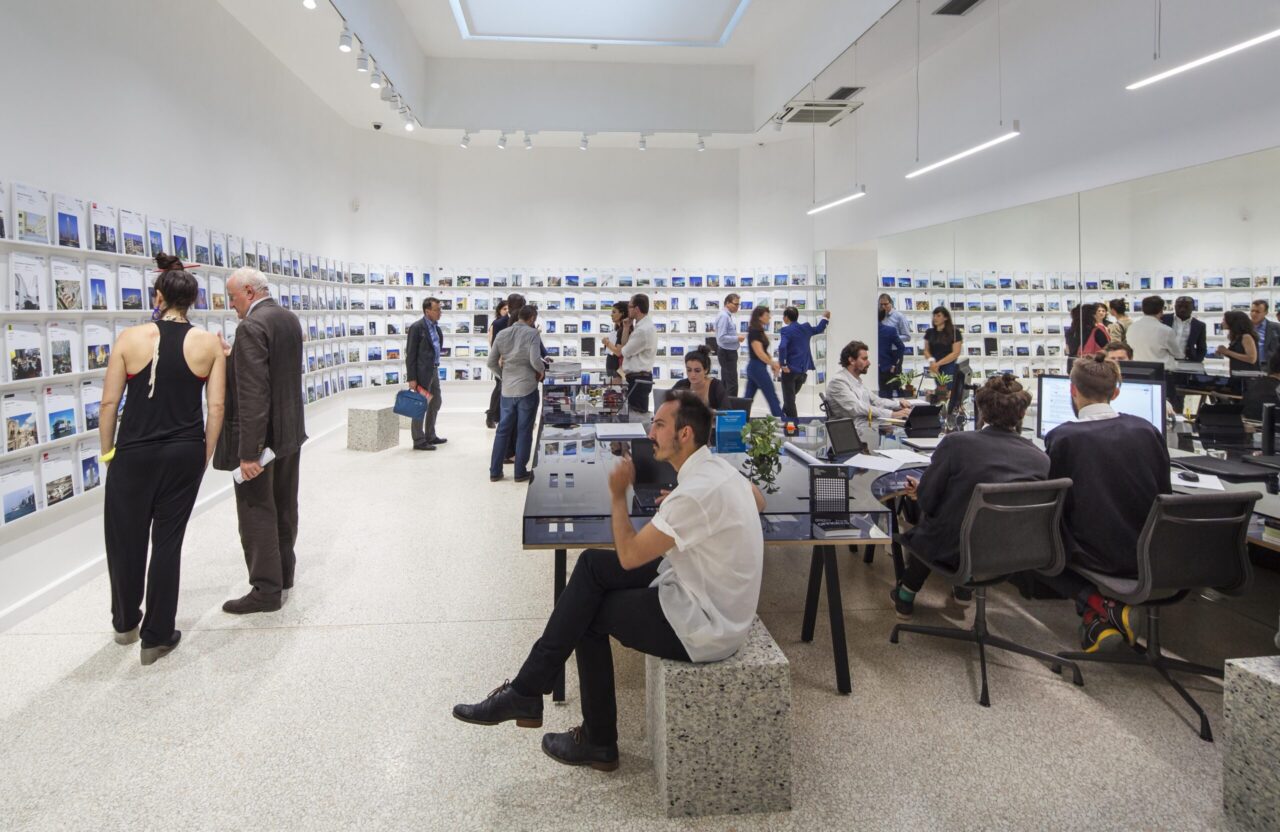
Curators: Ana Miljački, Eva Franch i Gilabert, Ashley Schafer
Associate Curator: Michael Kubo
Assistant Curators: Carlos Mínguez Carrasco, Jacob Reidel
Lead Organizer: Storefront for Art and Architecture
Co-Organizer: PRAXIS
Exhibition Design: Leong Leong
Graphic Design: Pentagram
Technology Architecture: CASE
Audio-Visual and Lighting Design: Arup
Click here more information on Office US hosted by the Storefront for Art and Architecture
